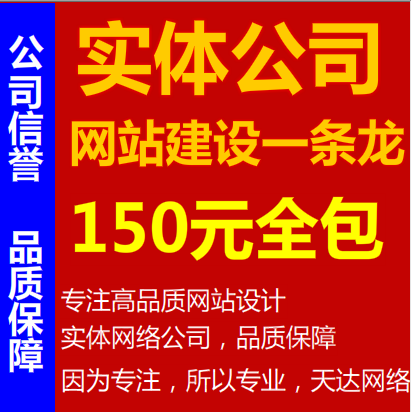行转列跟列转行
日期:2014-05-16 浏览次数:20516 次
行转列和列转行
行列互转,是一个经常遇到的需求。实现的方法,有case when方式和2005之后的内置pivot和unpivot方法来实现。
在读了技术内幕那一节后,虽说这些解决方案早就用过了,却没有系统性的认识和总结过。为了加深认识,再总结一次。
行列互转,可以分为静态互转,即事先就知道要处理多少行(列);动态互转,事先不知道处理多少行(列)。
--创建测试环境
USE tempdb;
GO
IF OBJECT_ID('dbo.Orders') IS NOT NULL
DROP TABLE dbo.Orders;
GO
CREATE TABLE dbo.Orders
(
orderid int NOT NULL PRIMARY KEY NONCLUSTERED,
orderdate datetime NOT NULL,
empid int NOT NULL,
custid varchar(5) NOT NULL,
qty int NOT NULL
);
CREATE UNIQUE CLUSTERED INDEX idx_orderdate_orderid
ON dbo.Orders(orderdate, orderid);
INSERT INTO dbo.Orders(orderid, orderdate, empid, custid, qty)
VALUES(30001, '20020802', 3, 'A', 10);
INSERT INTO dbo.Orders(orderid, orderdate, empid, custid, qty)
VALUES(10001, '20021224', 1, 'A', 12);
INSERT INTO dbo.Orders(orderid, orderdate, empid, custid, qty)
VALUES(10005, '20021224', 1, 'B', 20);
INSERT INTO dbo.Orders(orderid, orderdate, empid, custid, qty)
VALUES(40001, '20030109', 4, 'A', 40);
INSERT INTO dbo.Orders(orderid, orderdate, empid, custid, qty)
VALUES(10006, '20030118', 1, 'C', 14);
INSERT INTO dbo.Orders(orderid, orderdate, empid, custid, qty)
VALUES(20001, '20030212', 2, 'B', 12);
INSERT INTO dbo.Orders(orderid, orderdate, empid, custid, qty)
VALUES(40005, '20040212', 4, 'A', 10);
INSERT INTO dbo.Orders(orderid, orderdate, empid, custid, qty)
VALUES(20002, '20040216', 2, 'C', 20);
INSERT INTO dbo.Orders(orderid, orderdate, empid, custid, qty)
VALUES(30003, '20040418', 3, 'B', 15);
INSERT INTO dbo.Orders(orderid, orderdate, empid, custid, qty)
VALUES(30004, '20020418', 3, 'C', 22);
INSERT INTO dbo.Orders(orderid, orderdate, empid, custid, qty)
VALUES(30007, '20020907', 3, 'D', 30);
GO
?行转列-静态方案:
--行转列的静态方案一:CASE WHEN,兼容sql2000 select custid, sum(case when YEAR(orderdate)=2002 then qty end) as [2002], sum(case when YEAR(orderdate)=2003 then qty end) as [2003], sum(case when YEAR(orderdate)=2004 then qty end) as [2004] from orders group by custid; GO --行转列的静态方案二:PIVOT,sql2005及以后版本 select * from (select custid,YEAR(orderdate) as years,qty from orders) as ord pivot(sum(qty) for years in([2002],[2003],[2004]))as p GO
?行转列-动态方案:加入了xml处理和SQL注入预防判断
--既然是用到了动态SQL,就有一个老话题:SQL注入。建一个注入性字符的判断函数。
CREATE FUNCTION [dbo].[fn_CheckSQLInjection]
(
@Col nvarchar(4000)
)
RETURNS BIT --如果存在可能的注入字符返回true,反之返回false
AS
BEGIN
DECLARE @result bit;
IF
UPPER(@Col) LIKE UPPER(N'%0x%')
OR UPPER(@Col) LIKE UPPER(N'%;%')
OR UPPER(@Col) LIKE UPPER(N'%''%')
OR UPPER(@Col) LIKE UPPER(N'%--%')
OR UPPER(@Col) LIKE UPPER(N'%/*%*/%')
OR UPPER(@Col) LIKE UPPER(N'%EXEC%')
OR UPPER(@Col) LIKE UPPER(N'%xp_%')
OR UPPER(@Col) LIKE UPPER(N'%sp_%')
OR UPPER(@Col) LIKE UPPER(N'%SELECT%')
OR UPPER(@Col) LIKE UPPER(N'%INSERT%')
OR UPPER(@Col) LIKE UPPER(N'%UPDATE%')
OR UPPER(@Col) LIKE UPPER(N'%DELETE%')
OR UPPER(@Col) LIKE UPPER(N'%TRUNCATE%')
OR UPPER(@Col) LIKE UPPER(N'%CREATE%')
OR UPPER(@Col) LIKE UPPER(N'%ALTER%')
OR UPPER(@Col) LIKE UPPER(N'%DROP%')
SET @result=1
ELSE
SET @result=0
return @result
END
GO
--行转列的动态方案一:CASE WHEN,兼容sql20
免责声明: 本文仅代表作者个人观点,与爱易网无关。其原创性以及文中陈述文字和内容未经本站证实,对本文以及其中全部或者部分内容、文字的真实性、完整性、及时性本站不作任何保证或承诺,请读者仅作参考,并请自行核实相关内容。
